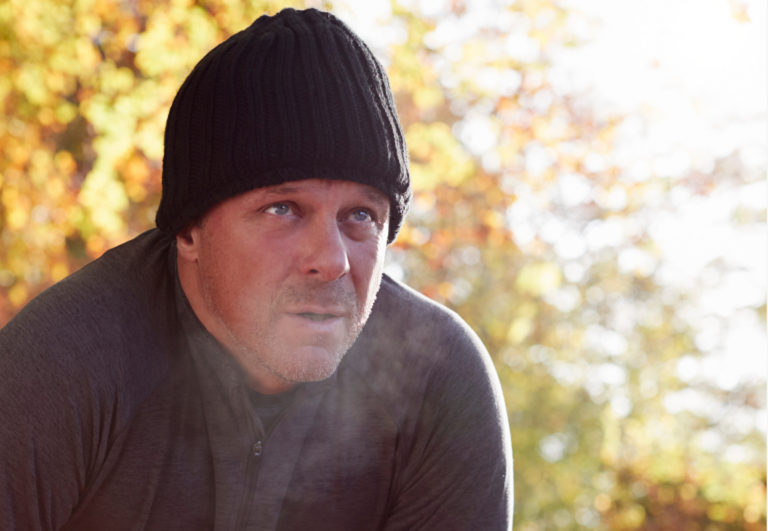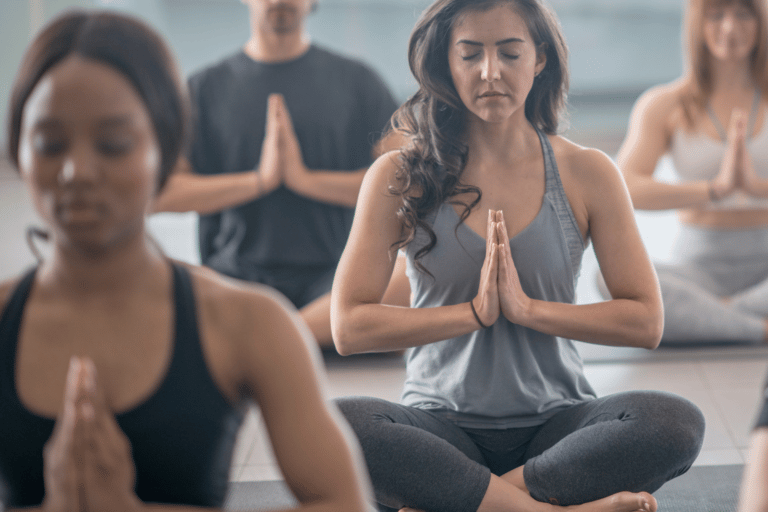Breathing Exercises for Post-Run Recovery: Enhance Your Cool-Down Routine
As a seasoned runner and UESCA certified running coach, I’ve witnessed firsthand the impact of breathing exercises on post-run recovery. The period immediately following a run is crucial for initiating muscle repair and reducing soreness. Integrating simple, yet effective breathing techniques can not only fast-track this recovery process but also enhance overall relaxation.
I teach runners that proper breathing post-run shouldn’t be overlooked. By engaging in controlled breathing, you help increase blood flow and oxygen delivery to fatigued muscles, which is essential for recovery. It also provides a moment of rest, allowing your body to shift from the exertion of the run to the calmness needed for recovery. I recommend starting with deep, rhythmic breathing—as you inhale for a count of four, hold for four, and exhale for four, you trigger a parasympathetic response that aids in muscle relaxation and recovery.
Incorporating such exercises into your cooldown routine can be the difference between prolonged muscle soreness and a swift, efficient recovery. It’s a straightforward strategy that doesn’t require much time or effort, yet the benefits are substantial, amplifying the effects of rest and preparing your body for the next run.
Fundamentals of Post-Run Recovery
After a demanding run, recovery is as crucial as the workout itself. It’s a multifaceted process that includes phases of rest, rehydration, and active recovery techniques. My role as a UESCA certified running coach often includes guiding runners through these essential components to ensure proper recovery. Now, let’s explore each of these elements in more detail.

Understanding Recovery Phases
Rest:
The primary phase of recovery is rest, which allows time for the body to repair and strengthen itself.
- Sleep: Aim for 7-9 hours of quality sleep to facilitate muscular repair and overall recovery.
Replenishing:
Refuel with a mix of carbohydrates, proteins, and fats within 45 minutes post-run to replenish glycogen stores and aid in muscle recovery.
Active Recovery Techniques
Breathwork:
Practicing controlled breathing can promote relaxation and reduce heart rate after running.
- Example: Engage in 10-15 breath cycles, inhaling deeply through the nose and exhaling slowly through the mouth during your cooldown.
Gentle Movement:
Incorporate activities like walking, light stretching, or yoga the day after a run to enhance blood flow and aid recovery.
Importance of Hydration
Water:
Proper hydration is essential for temperature regulation and muscle function. Drink plenty of water to rehydrate after running.
Electrolytes:
Replacing lost electrolytes helps maintain fluid balance. Consider an electrolyte drink if you’ve had a long or particularly sweaty run.
| Fluid Type | Purpose | Timing |
|---|---|---|
| Water | Rehydration | Immediately post-run and consistently throughout the day |
| Electrolyte | Rebalance mineral losses | During and after runs, especially in hot conditions |
In summary, as a UESCA certified running coach, I stress the importance of understanding and implementing proper recovery techniques. It’s essential for runners to pay attention to rest, employ active recovery strategies, and prioritize rehydration to fully recover and prepare for their next run.
Breathing Exercises for Recovery

Proper breathing is crucial for accelerating recovery post-run, as it helps to increase oxygen flow to tired muscles, therefore aiding in reducing muscle soreness and normalizing blood pressure.
Deep Breathing Fundamentals
I teach runners that foundational deep breathing enhances oxygen uptake and improves blood circulation, which are key to recuperation.
Begin with diaphragmatic breathing, which is breathing deeply into your belly rather than shallow breaths into your chest. Here’s a basic exercise I recommend:
- Lie down or sit comfortably.
- Place one hand on your belly.
- Inhale slowly through your nose, allowing your stomach to rise.
- Exhale slowly through your mouth, stomach falling.
- Repeat for 3-5 minutes.
Breathing Techniques for Relaxation
For relaxation, Pursed Lip Breathing is highly effective. It can help manage breathlessness and promote calm after strenuous activity. Perform it with these steps:
- Inhale through your nose for about two seconds.
- Pucker your lips as if blowing out candles.
- Exhale slowly and gently through pursed lips for approximately four seconds.
By routinely integrating these exercises, you’ll notice a decrease in muscle soreness post-run as breathing helps to facilitate relaxation and recovery.
Nutritional Strategies
After a run, it’s essential to focus on nutrition to help the body recover. Being a UESCA certified running coach, I know the importance of consuming the right balance of nutrients to aid in refueling and repairing muscles.
Macro and Micro Nutrients Intake
Proteins and carbohydrates are the cornerstones of post-run nutrition. Proteins are crucial for repairing muscle fibers, while carbohydrates are needed to replenish glycogen stores, mitigating fatigue. A smoothie can be an effective way to get both macros shortly after your run. Here’s a quick smoothie recipe high in both:
Post-Run Recovery Smoothie:
- Protein: 1 scoop of whey protein
- Carbs: 1 banana
- Additional nutrients: Add a handful of spinach for iron and a tablespoon of chia seeds for omega-3 fatty acids
Fat should not be neglected, as it plays an important role in hormone production and overall health. Include sources of healthy fats like avocados or nuts in your diet throughout the day.
Post-Exercise Meal Planning
Planning your meals is key to ensuring you receive the nutrition your body requires for recovery. A post-exercise meal should be consumed within 45 minutes to an hour after running to maximize refueling.
Here’s an example of a balanced post-run meal:
- Carbs: 1 cup of cooked quinoa
- Protein: Grilled chicken breast
- Fats: Drizzle with olive oil and garnish with almonds
Remember, hydration is an integral part of your nutritional strategy. Pair your meals and smoothies with adequate water to rehydrate effectively.
Stretching and Muscle Care

Effective post-run recovery involves both stretching to improve flexibility and range of motion, and muscle care techniques such as self-massage and foam rolling to facilitate muscle repair. These practices help maintain the health of muscles, tendons, and ligaments, reducing the risk of injury.
Static and Dynamic Stretching
Static stretching involves holding a stretch for a period of time, typically 15-30 seconds. This type of stretching is beneficial after a run because it helps to lengthen muscles and increase flexibility. Here are a few static stretches I recommend:
- Hamstring stretch: Sit on the ground and reach for your toes while keeping your legs straight.
- Quadriceps stretch: Stand on one leg and pull the other foot towards your buttock.
- Calf stretch: Place your hands on a wall and extend one leg back, keeping the heel on the ground.
Dynamic stretches consist of controlled movements that improve range of motion and prepare your body for running. Incorporating dynamic stretches into your cool-down routine can help your muscles recover and prepare for future runs. Examples include:
- Leg swings: Swing your leg back and forth, gradually increasing the range of motion.
- Lunge with a twist: Step forward into a lunge and rotate your torso towards the front leg.
- Hip circles: Stand on one leg and draw circles with the other hip, both clockwise and counterclockwise.
Self-Massage and Foam Rolling
Self-massage and foam rolling are techniques that target muscle tightness and promote relaxation. Using a foam roller can help break down knots in muscles and enhance blood flow, speeding up recovery. When I use the foam roller, I focus on:
- Calves: Place the foam roller under your calf and roll from the ankle to below the knee.
- IT band: Lie on your side with the roller near your hip and slowly roll down towards your knee.
- Quadriceps: Face down, place the roller under your thigh, and roll from above the knee to the hip.
These muscle care practices not only aid in muscle repair but also can increase flexibility and help reduce the likelihood of muscle soreness and injury. I always emphasize consistency with these techniques for the best results in my experience as a UESCA certified running coach.
Injury Prevention and Management
Injury prevention and recovery strategies are essential for maintaining an injury-free running experience. My approach focuses on preemptive measures and responding effectively to common running injuries.
Preemptive Measures and Proper Technique
Proper Warm-Up: Before running, incorporating dynamic stretches such as leg swings can help improve flexibility and prepare your muscles for the activity ahead.
- Quad Stretch: Hold for 20-30 seconds to loosen the thigh muscles.
- Calf Stretch: Essential to prevent calf tightness and injuries like Achilles tendinitis.
Use proper running form to reduce stress on the body. This includes maintaining a neutral pelvis, avoiding overstriding, and running with a slight forward lean.
Responding to Running Injuries
When an injury occurs, the RICE method (Rest, Ice, Compression, Elevation) is a trusted approach to manage inflammation and pain.
- Rest: Avoid activities that cause pain, swelling, or discomfort.
- Ice: Apply ice to the injured area to reduce inflammation.
- Compression: Use elastic bandages for support.
- Elevation: Elevate the injured limb above heart level.
For long-term management, consult a physiotherapist for a personalized recovery plan that may include exercises to rebuild strength and avoid overtraining. Pay attention to the IT band, as it is a common source of pain for runners, and may require specific stretches and strengthening exercises to address issues.
Recovery Routine Implementation
Implementing a successful recovery routine hinges on consistency and adaptation to various running conditions. Integrating specific breathing strategies and exercises can significantly enhance the post-run recovery process.
Developing Consistent Recovery Habits
Establishing a regular cooldown is imperative after every run. I advocate for a structured approach:
- Cooldown: Begin with 5-10 minutes of easy walking or jogging to gradually bring your heart rate down.
- Dynamic Movements: Include high knees or gentle stretching for another 5 minutes to prevent stiffness.
- Breathing Exercises: Practice deep breathing techniques; aim for coherent breathing, four seconds inhale, and eight seconds exhale.
- Hydration & Nutrition: Replenish fluids and nutrients within 30 minutes post-run to aid in recovery.
It’s essential that recovery habits become as ingrained as your warm-up routine, tailoring them as necessary based on the intensity and duration of your run.
Tailoring Routines to Running Conditions
Weather and running conditions have significant impacts on recovery needs. Here’s how I adjust my routine:
- Hot or Humid Weather: Extend your cooldown period, and focus on rehydration. Practice longer exhalation during breathing exercises to promote relaxation and cooling.
- Cold Weather: Incorporate a longer warm-up before starting your cooldown to maintain muscle temperature.
- Long Runs or Hills: Add extra time to your post-run stretching, emphasizing lower body muscle groups for optimal recovery.
My training plans are always flexible to accommodate these conditions and ensure active recovery is maximized. Whether you’re walking, jogging, cycling, or engaging in low-impact cross-training, adjusting these elements based on your training plan and the day’s conditions will foster better recovery and performance.






